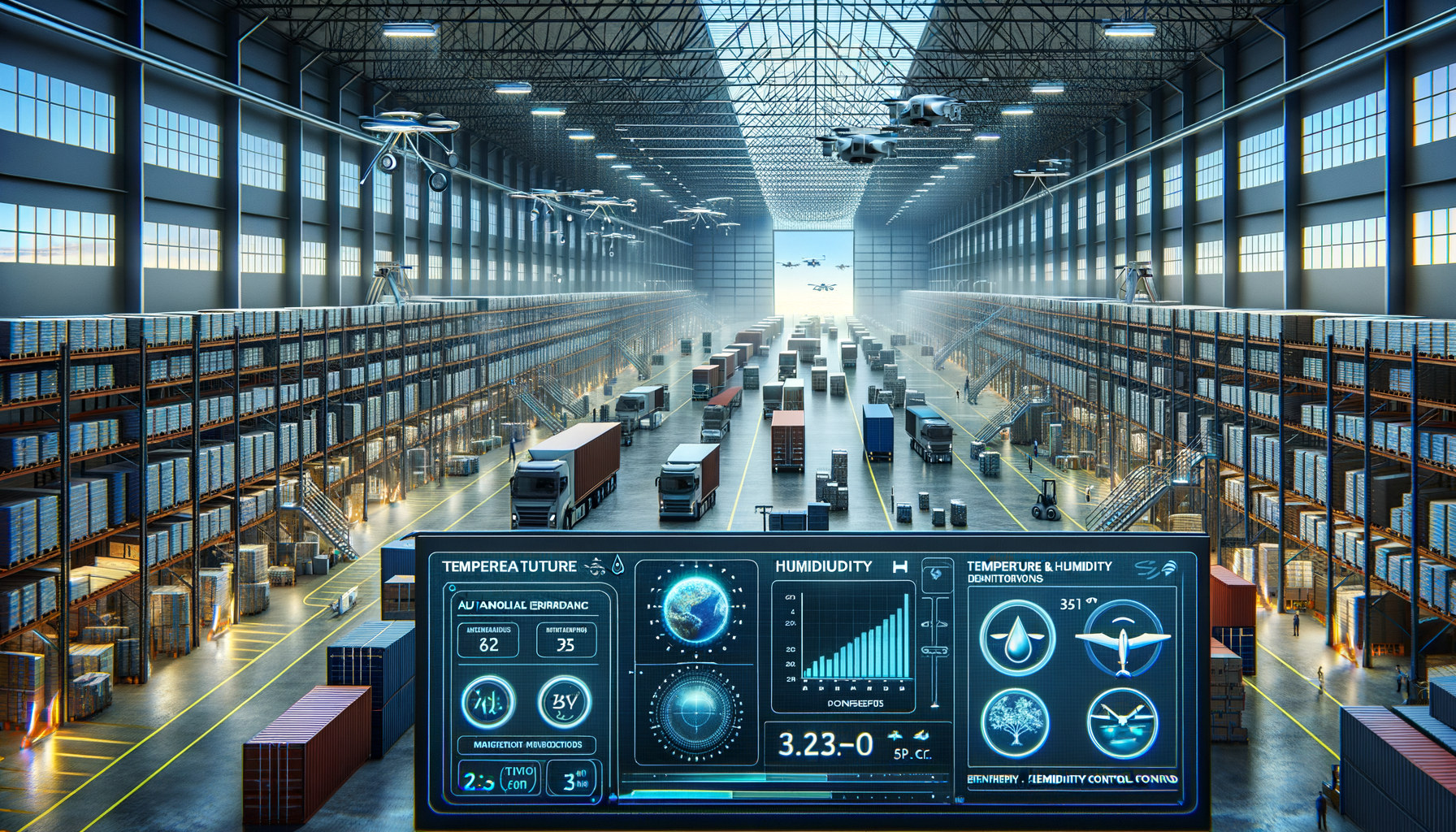
Mastering Environmental Control: The Role of Temperature and Humidity Monitoring in Warehouses
The Importance of Temperature Monitoring in Warehouses
Temperature monitoring is a crucial aspect of warehouse management, impacting the quality and longevity of stored products. In industries such as food and pharmaceuticals, maintaining specific temperature ranges is not just a matter of quality but also of compliance with health and safety regulations. Temperature control helps prevent spoilage and degradation, ensuring that products reach consumers in optimal condition.
Warehouses often store a diverse range of products, each with unique temperature requirements. For instance, fresh produce requires cool temperatures to maintain freshness, while pharmaceuticals may need to be stored at controlled room temperatures to ensure efficacy. Deviations in temperature can lead to significant financial losses due to spoiled goods, making reliable temperature monitoring systems essential.
Modern technology offers a variety of solutions for effective temperature monitoring. Automated systems equipped with sensors can continuously track temperature levels and alert managers to any fluctuations. These systems can be integrated with data analytics tools to provide insights into temperature trends, allowing for proactive management. By implementing such systems, warehouses can enhance product quality, reduce waste, and improve overall operational efficiency.
Understanding Humidity Monitoring and Its Impact
Humidity monitoring is equally important in warehouse environments, as it directly affects the integrity of many products. High humidity levels can lead to mold growth and product degradation, while low humidity can cause items to dry out or become brittle. This is particularly relevant in the storage of paper goods, electronics, and certain food products.
For instance, high humidity can cause electronic components to corrode, leading to malfunction or failure. Similarly, paper products can absorb moisture, resulting in warping or mold growth. To mitigate these risks, warehouses employ humidity control systems that maintain optimal moisture levels, protecting products from environmental damage.
Advanced humidity monitoring systems utilize hygrometers and sensors to provide real-time data on moisture levels. These systems can be connected to automated climate control systems, which adjust conditions to maintain desired humidity levels. By leveraging such technologies, warehouses can safeguard their inventory and minimize the risk of product loss due to adverse environmental conditions.
Technological Advances in Monitoring Systems
The evolution of technology has significantly enhanced the capabilities of temperature and humidity monitoring systems. Wireless sensors and IoT (Internet of Things) devices have made it easier to monitor environmental conditions remotely and in real-time. These devices can be placed throughout a warehouse to provide comprehensive coverage and ensure that all areas are within the desired environmental parameters.
IoT-enabled devices can communicate with centralized management systems, offering detailed insights and alerts when conditions deviate from set thresholds. This connectivity allows warehouse managers to respond quickly to potential issues, preventing product damage and loss. Moreover, the integration of AI and machine learning algorithms can predict environmental changes and suggest adjustments to maintain optimal conditions.
The use of cloud-based platforms further enhances these systems by enabling data storage and analysis on a global scale. Managers can access environmental data from anywhere, facilitating informed decision-making and strategic planning. With these technological advancements, warehouses can achieve greater efficiency and reliability in maintaining product quality.
Challenges in Implementing Monitoring Systems
Despite the advantages, implementing temperature and humidity monitoring systems in warehouses presents certain challenges. One major challenge is the initial cost of setting up these systems, as advanced sensors and IoT devices can be expensive. However, the long-term savings from reduced product loss and improved efficiency often justify the investment.
Another challenge is ensuring the accuracy and reliability of monitoring systems. Sensors must be regularly calibrated and maintained to provide precise data. Additionally, warehouses must have robust IT infrastructure to support the integration of monitoring systems with other operational technologies.
Training staff to effectively use and manage these systems is also crucial. Employees need to understand how to interpret data and respond to alerts to prevent environmental deviations. By addressing these challenges, warehouses can fully leverage the benefits of monitoring systems to enhance their operational capabilities.
Conclusion: The Future of Environmental Monitoring in Warehouses
The future of warehouse management lies in the seamless integration of advanced temperature and humidity monitoring systems. As technology continues to evolve, these systems will become more sophisticated, offering even greater precision and control over environmental conditions. Warehouses that invest in these technologies will not only protect their inventory but also gain a competitive edge through improved efficiency and customer satisfaction.
By embracing these innovations, warehouses can ensure that they meet regulatory standards and maintain the highest quality of products. The ongoing development of monitoring technologies promises a future where warehouses can operate with unprecedented levels of control and reliability, ultimately benefiting both businesses and consumers alike.


